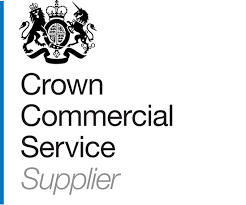Learning and development opportunities are essential in helping healthcare organisations achieve operational efficiency and long-term success. Key activities such as teaching healthcare staff new skills and techniques, onboarding new starters, and managing training for regularly rotated staff are crucial for healthcare organisations. And, with the rapid adoption of e-learning technology, platforms such as learning management systems sit at the heart of these vital L&D practices. With the right LMS and its core features, healthcare organisations can transform their L&D initiatives.
In this blog, we’ll explore some of these core LMS features and how they support L&D within the healthcare sector – keep reading to find out more.
What is an LMS?
A learning management system (LMS) is a digital platform used to manage and measure e-learning and online training by uniting all the elements required to deliver L&D programmes, including content creation, training, assessment, and reporting.
Looking for more information on LMSs? Read our ultimate guide here.
Essential LMS features and functions for healthcare organisations
Course development tools
Training staff and providing them with long-term L&D opportunities will require a library of lessons, courses and training materials. One of the biggest benefits of using an LMS is that all L&D content is housed in one centralised system that can be easily accessed by anyone with login details. When it comes to acquiring or producing this content, limited budgets and resources can cause problems for healthcare organisations which require a broad range of materials that can cater to various job roles, departments, competencies, and capabilities.
While SCORM-compliant LMSs streamline the process of purchasing training content from a third-party content creator, buying training materials comes at an additional cost. The solution here is to invest in an LMS with comprehensive course development tools so that L&D teams can easily create new training materials at no extra cost, thus ensuring a high ROI on the platform.

An LMS such as Totara Learn offers powerful content creation and management features. With easy-to-use drag-and-drop functionality admins can easily upload resources such as documents, images, audio and video. What’s more, Totara Learn facilitates a range of content types such as wikis, quizzes, branching scenarios and glossaries – ensuring that training materials are comprehensive, engaging and fun.
Learning pathways
Every healthcare organisation will be required to adhere to strict regulatory compliances, defined by governing bodies. Healthcare staff must be fully compliant and in order to achieve this they will typically be asked to complete multiple compliance training programmes. Whilst an LMS serves as an excellent resource library for compliance training materials, it is the automation technology embedded in better LMSs that makes it possible for organisations to guarantee a fully compliant workforce – making automation an essential component of any healthcare LMS.
With LMS automation, L&D admins can create specific learning pathways that determine the courses a learner is required to complete, along with the order they should complete them and the time frame. Learning pathways can be designed based on variables such as job role, department or previously completed learning. With this functionality, compliance training can be automatically assigned to the relevant employees based on existing affiliations. Employees will be notified of any mandatory training that needs to be completed and any deadlines, and automation tools can be used to set reminders for refresher courses or training expiry dates. This takes away a great deal of the manual processes often associated with compliance training and provides a complete audit trail for reporting purposes.

Reports
Once healthcare teams have been notified of their mandatory compliance training, department heads and team leaders cannot be expected to manually monitor whether staff have indeed completed their assigned training. This is particularly true of large healthcare organisations with multiple departments and a large workforce. The answer here is LMS reporting functionality.
With LMS reports, site admins can create and manage custom-built reports designed to monitor learner progress and training completion. Reports can identify and analyse elements such as assessment results, course completion rates, sign-on rates, and engagement levels. This is a valuable feature for healthcare organisations carrying out comprehensive compliance training as reports will serve as evidence of completion and a fully compliant workforce. As a result, healthcare organisations can mitigate safety risks and avoid hefty compliance fines.
Assessments
It’s not uncommon for healthcare professionals to transition between multiple departments in order to gain broader job experience. This however can cause problems for department heads who need to make sure new members of staff possess the essential skills and competencies required to perform well in their new position.
To make the training process more efficient, department heads and managers need to get a good understanding of existing proficiency levels and skill sets. Once this has been determined, training can be designed to fill any individual's skills gaps, without asking experienced staff members to undergo training programmes that are only teaching them skills they are already proficient in.
Assessment features in an LMS are an effective way to test staff knowledge in a data-driven and controlled environment. Admins can create assessments such as multiple-choice tests, quizzes and formal exams, that are designed to identify skills gaps and collate results automatically. With the information gathered from assessment results, new starters can be placed on a relevant learning plan, ensuring they get up to speed in their new role as soon as possible.
Managing offline activities with LMS tools
Although a large portion of healthcare training activities can be delivered in an online teaching environment, some elements may require face-to-face offline teaching practices. For example, a practical seminar on new patient care techniques may be better relayed in a classroom setting.

However, online and offline learning practices do not need to exist separately. In fact, an LMS allows healthcare organisations to seamlessly weave together both elements through blended learning techniques. With an LMS such as Totara Learn, the Seminar feature can be used to schedule and manage offline classroom-based events such as workshops and seminars. Admins can notify learners of upcoming events whilst tracking attendance and managing demand. Seminar tools in Totara Learn act as a booking system, providing users with details such as location, event leader, start time/finish time, and capacity. With this functionality, healthcare teams can successfully monitor offline and online training activities in one centralised e-learning platform. Automation, once again, plays a significant role by removing many of the manual reminders and enrolment monitoring activities.
Team dashboards
One of the biggest issues facing healthcare professionals is understaffing and one of the consequences of this is healthcare leaders having to prioritise other tasks and initiatives over L&D activities. But with LMS technology freeing up hours of manual admin that would normally be spent on activities such as teaching training sessions, producing L&D reports and creating new printed training materials, healthcare leaders have a better chance of successfully delivering effective L&D programmes despite a lack of personnel.
A key LMS feature that busy team leaders should prioritise is dashboards. With this feature, department heads or managers can gain an instant overview of how their teams are progressing. Team dashboards provide crucial insights into L&D activities by displaying team statistics, course completions, and overall progress in a visually appealing and easy-to-read format. With this functionality, essential L&D analysis can be carried out quickly and efficiently by busy managers with a lack of time.
We help healthcare organisations like yours solve their L&D challenges
To benefit from the essential features and functionality discussed in this article, you need to choose the right platform. Our comprehensive and cost-effective e-learning solutions are already empowering healthcare organisations like yours, boasting key functionality, flexibility and scalability designed to help your organisation achieve operational success.
To support organisations within the healthcare sector with their e-learning activities and platform acquisition, we created a dedicated free healthcare hub full of valuable resources and essential information – simply sign up to it here to gain access. If you’d like to speak to one of our e-learning experts, contact us today or book a free demo.

Hubken's FREE Healthcare LMS Hub
Make a difference one patient at a time! Get unlimited access to a wealth of LMS resources designed to help healthcare organisations successfully solve their e-learning challenges.
-1.png?width=900&height=433&name=Blog%20CTAs%20(2)-1.png)



